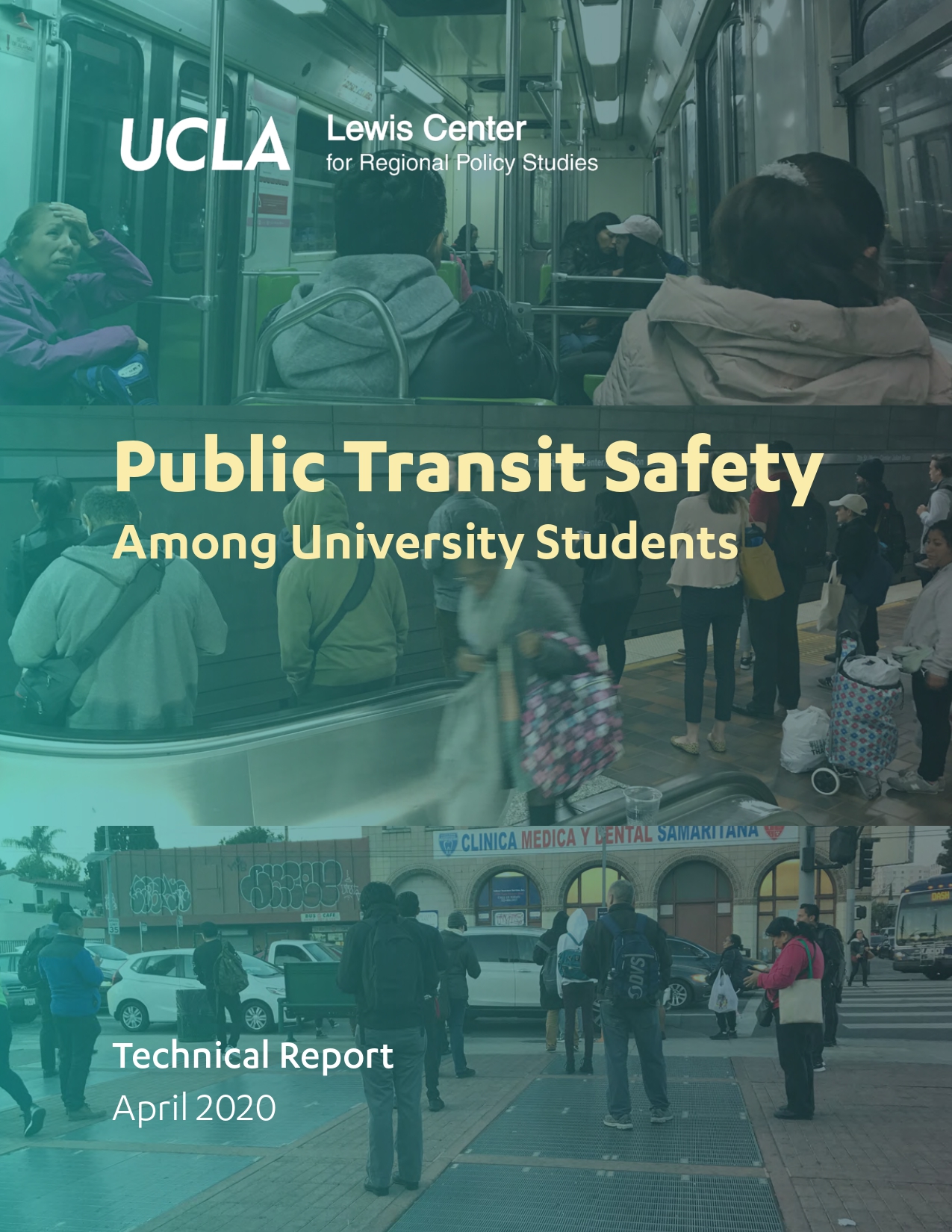Date: April 1, 2020
Author(s): Anastasia Loukaitou-Sideris, Madeline Brozen, Hao Ding, Miriam Pinski, Fariba Siddiq
Abstract
Sexual harassment is a common occurrence in transit environments, and female passengers are the most likely victims. While a robust literature has examined the social and physical parameters of transit crime, we know less about the extent, type, sites, and socio-physical determinants of sexual harassment in transit environments, and even less about effective strategies. This study focuses on the sexual harassment experiences of university students during their public transit journeys. Focusing on Los Angeles, we examine the transit safety concerns and sexual harassment experiences of students at three local universities: University of California, Los Angeles (UCLA), California State University, Los Angeles (CSULA), and California State University, Northridge (CSUN). We inquire how these experiences may vary by gender or other individual characteristics; how they affect the student choices about using transit; and what type of precautions and behavioral and travel adaptations students usually take. This study explores these issues drawing from a survey of 1,284 students from the three aforementioned universities. Students with transit passes at these campuses received an online survey link to a questionnaire involving questions about their experiences with harassment on public transit, as well as their general concerns with bus and rail transit, their perceptions of safety, and their travel behavior patterns. Additionally, we conducted interviews with representatives of transit operators in the Los Angeles area to find out what actions they may take to tackle sexual harassment on their systems. We found that 72% of respondents using the bus system and 48% of respondents using the rail system reported having experienced at least one sexual harassment behavior at a transit setting over the last three years. Furthermore, significantly higher percentages of female than male students reported experiencing sexual harassment. The survey showed that 65% of female students felt the need to take some precautions during their transit trips, compared to only 30% of male students who did the same. Fear leads those students who have other options to avoid transit, while some students who are captive riders feel the need to avoid traveling at night or take a series of other precautions. Only a few agencies include questions about sexual harassment in their passenger surveys; and those who do, focus only on the onboard passenger experience.
About the Project
Transit use is on the decline in many American cities. Research has shown that concerns about transit safety may influence travel behavior and transit use, and that women are particularly fearful about victimization while travelling. Studies have also shown that women are also very concerned about one type of crime — sexual harassment — which often goes unreported, and thus remains largely invisible to transit operators.The research team will survey college students in 16 cities in six continents to examine their patterns of mobility and transit, with an emphasis on their feelings of safety on public transit and other transportation modes, experiences of sexual harassment, and other types of crime and victimization on public transport and other transportation modes. The results of the survey will establish the extent to which fear regarding their safety affects college students’ transit ridership, and the research team will examine how survey responses may vary because of the students’ sociodemographic characteristics.


